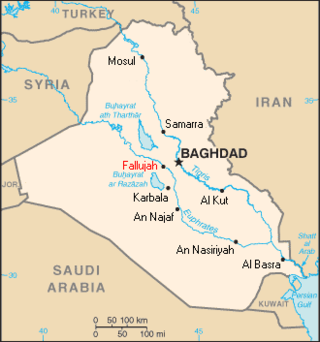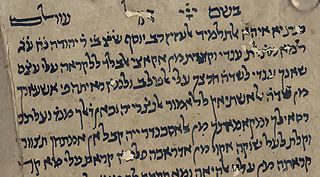Related Research Articles

Abraham ben Meir Ibn Ezra was one of the most distinguished Jewish biblical commentators and philosophers of the Middle Ages. He was born in Tudela, Taifa of Zaragoza.

Hai ben Sherira better known as Hai Gaon, was a medieval Jewish theologian, rabbi and scholar who served as Gaon of the Talmudic academy of Pumbedita during the early 11th century. He was born in 939 and died on March 28, 1038. He received his Talmudic education from his father, Sherira ben Hanina, and in early life acted as his assistant in teaching. In his forty-fourth year he became associated with his father as "av bet din," and with him delivered many joint decisions. According to Sefer HaKabbalah of Rabbi Abraham ben David (Ravad), he was the last of the Geonim.

Medieval Hebrew was a literary and liturgical language that existed between the 4th and 19th century. It was not commonly used as a spoken language, but mainly in written form by rabbis, scholars and poets. Medieval Hebrew had many features that distinguished it from older forms of Hebrew. These affected grammar, syntax, sentence structure, and also included a wide variety of new lexical items, which were either based on older forms or borrowed from other languages, especially Aramaic, Greek and Latin.
Yefet ben Ali was perhaps the foremost Karaite commentator on the Bible, during the "Golden Age of Karaism". He lived about 95 years, c. 914-1009. Born in Basra in the Abbasid Caliphate, he later moved to Jerusalem between 950 and 980, where he died. The Karaites distinguished him by the epithet maskil ha-Golah.
Rishonim were the leading rabbis and poskim who lived approximately during the 11th to 15th centuries, in the era before the writing of the Shulchan Aruch and following the Geonim. Rabbinic scholars subsequent to the Shulchan Aruch are generally known as acharonim.

David Kimhi (1160–1235), also known by the Hebrew acronym as the RaDaK (רַדָּ"ק), was a medieval rabbi, biblical commentator, philosopher, and grammarian.
Jonah ibn Janah or ibn Janach, born Abū al-Walīd Marwān ibn Janāḥ, , was a Jewish rabbi, physician and Hebrew grammarian active in al-Andalus. Born in Córdoba, ibn Janah was mentored there by Isaac ibn Gikatilla and Isaac ibn Mar Saul, before he moved around 1012, due to the sacking of the city by Berbers. He then settled in Zaragoza, where he wrote Kitab al-Mustalhaq, which expanded on the research of Judah ben David Hayyuj and led to a series of controversial exchanges with Samuel ibn Naghrillah that remained unresolved during their lifetimes.

Judah ben David Hayyuj was a Moroccan Jewish linguist. He is regarded as the father of scientific grammar of the Hebrew language. He was born in Fez, Morocco, about 945. At an early age he went to Córdoba, where he seems to have remained till his death, which occurred about 1000 CE.
Jacob ben Reuben was a Karaite scholar and Bible exegete of the eleventh century. He wrote a brief Hebrew language commentary on the entire Bible, which he entitled Sefer ha-'Osher, because, as he says in the introduction, the reader will find therein sufficient information, and will not need to have recourse to the many voluminous commentaries which the author himself had consulted. The book is, in fact, merely a compilation; the author's explanation of any given passage is frequently introduced by the abbreviations or ; and divergent explanations of other commentators are added one after the other and preceded by the vague phrase. It is, in fact, chiefly an extract of Yefet ben Ali's work, from whom Jacob borrowed most of his explanations as well as the quotations from various authors, chiefly on the Pentateuch. But Jacob also drew upon later Karaite authors, the last of whom is Jeshua ben Judah, who, so far as is known, flourished about 1054. This date points to the second half of the eleventh century as the date of composition of the Sefer ha-'Osher.
Samuel ben Hofni. He was the Gaon of Sura from 998 to 1012.
Isaiah ben Elijah di Trani (the Younger) (Hebrew: ישעיה בן אליהו דטראני) was an Italian Talmudist and commentator who lived in the 13th century. He was the grandson, on his mother's side, of Isaiah (ben Mali) di Trani the Elder. He is usually quoted as ריא"ז (= "R. Isaiah Acharon, ז"ל"), or (ריב"א = "R. Isaiah ben Elijah").
Joseph ben Simeon Kara, also known as Mahari Kara, was a French Bible exegete who was born and lived in Troyes.
Joseph ben Abba Meir ben Joseph ben Jacob Ibn Kaspi, also known as Yosef Caspi, was a Provençal exegete, grammarian, and philosopher, apparently influenced by Averroës.
The Biurists were a class of Jewish Biblical exegetes, of the school of Moses Mendelssohn. Most of the Biblical commentators immediately preceding Mendelssohn had interpreted the Biblical passages from an individual point of view, and Mendelssohn was concerned to obtain clarity as to the actual meaning of the passages.
Aaron of Jerusalem, also known as Abū al-Faraj Hārūn ibn al-Faraj, was a Karaite Jewish scholar of the eleventh century who resided in Jerusalem.
Jewish printers were quick to take advantages of the printing press in publishing the Hebrew Bible. While for synagogue services written scrolls were used, the printing press was very soon called into service to provide copies of the Hebrew Bible for private use. All the editions published before the Complutensian Polyglot were edited by Jews; but afterwards, and because of the increased interest excited in the Bible by the Reformation, the work was taken up by Christian scholars and printers; and the editions published by Jews after this time were largely influenced by these Christian publications. It is not possible in the present article to enumerate all the editions, whole or partial, of the Hebrew text. This account is devoted mainly to the incunabula.
Judah ibn Balaam was an Andalusian rabbi of the eleventh century.
Tanhum ben Joseph of Jerusalem, also known as Tanḥum ha-Yerushalmi (1220–1291), was a 13th-century Hebrew lexicographer and biblical exegete who compiled several Hebrew works, the most notable of which being a lexicon on Mishnaic words entitled Murshid al-kāfī. Tanhum's learning in Jewish studies was so pervasive that he was coined the name "the Abraham ibn Ezra of the Levant."
Benjamin ben Judah of Rome, a member of the prominent Bozecco family, was a Biblical exegete, grammarian, and philosopher. He was the disciple of Joab ben Benjamin ben Solomon. Although his activity lay in the fields of exegesis and grammar, Dov Yarden argues that the poet Immanuel of Rome represents him as an accomplished scientist and philosopher.
References
- ↑ Martínez Delgado, José. "Moisés ben Samuel ha-Kohen Ibn Cheqatila (o Chiquitilla)". Diccionario Biográfico electrónico (DB~e) de la Real Academia de la Historia. Real Academia de la Historia. Retrieved 19 May 2022.
- Bacher, in Rev. Et. Juives, xxxi. 307–317.
![]() This article incorporates text from a publication now in the public domain : Crawford Howell Toy and Wilhelm Bacher (1901–1906). "GIKATILLA, MOSES IBN". In Singer, Isidore; et al. (eds.). The Jewish Encyclopedia . New York: Funk & Wagnalls.
This article incorporates text from a publication now in the public domain : Crawford Howell Toy and Wilhelm Bacher (1901–1906). "GIKATILLA, MOSES IBN". In Singer, Isidore; et al. (eds.). The Jewish Encyclopedia . New York: Funk & Wagnalls.